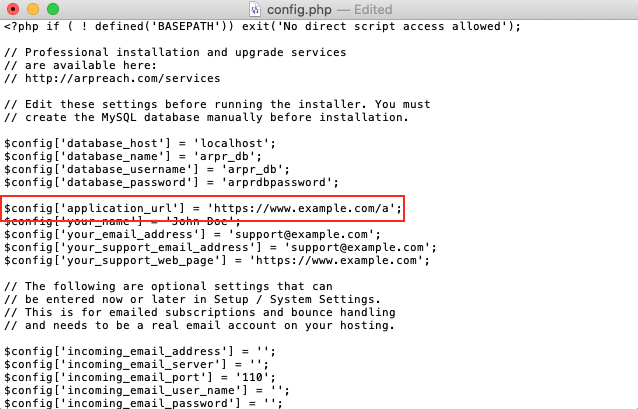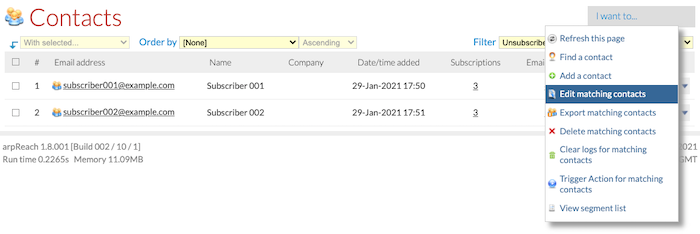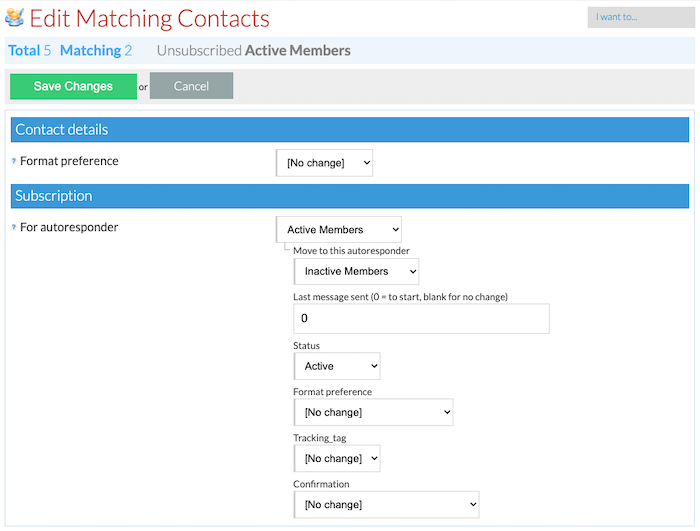How do I remove contacts whose subscription to an autoresponder failed?
arpReach will automatically update the status of a contact’s autoresponder subscription to ‘Failed‘ when any of the following occurs:
A hard bounce is received
The soft bounce limit (you’ve set for that autoresponder) is reached
The system will not automatically remove contacts with failed subscriptions from an autoresponder. You, however, have the option to manually remove them.
Here’s a sample scenario:
You have an autoresponder (Active Members) that serves as a newsletter for active members of your organization.
You want to filter the contacts whose subscription to that autoresponder (Active Members) failed so you could:
1. Add them to the suppression list
2. Move them to another autoresponder (Failed Subscriptions)
This way, you can make sure that they will no longer have any effect on your deliverability rate and so you can have a much clearer active VS cancellation figure.
This is how to do it:
1. Create the Failed Subscriptions destination autoresponder and set its status to Sending Paused or Disabled (See How to create autoresponders)

2. Create the segment (Active Members: Failed) that will filter those failed subscriptions (See How to create segments)
You only need to set one criteria for this segment:
— Match type: Subscription
— Autoresponder: Active Members
— Status: Failed
— All contacts must match: Ticked/chosen
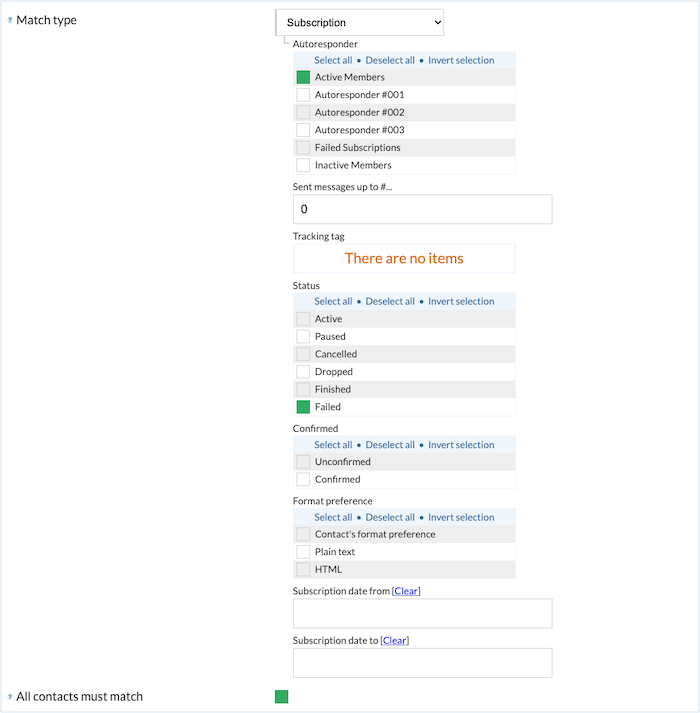
You can leave the rest of the fields as is.
3. Create an action (FailedSubs: Suppression List) that will allow you to easily add them to the suppression list (See How create an action)

Since we will be using the ‘Trigger Action for matching contacts‘ feature (See How to update contacts in bulk), you can choose any of the options on the ‘Event‘ field since what’s important is that you set the ‘Action‘ type to ‘Add to suppression list‘.
However, keep in mind that any contact that triggers that event (regardless if it is for this purpose/scenario or not) will be added to the suppression list. So it is advisable that you use an event type that you never really use (e.g., Remote call) or create an event/trigger solely for the purpose of this scenario (e.g., create a form for the Failed Subscriptions autoresponder and set the ‘Event‘ type of this action to ‘Subscription form submit‘.
4. Filter your contacts using the segment (Active Members: Failed) you created
You can either choose ‘Apply‘ from the ‘Choose action…‘ drop-down menu (when on the Segments list screen):
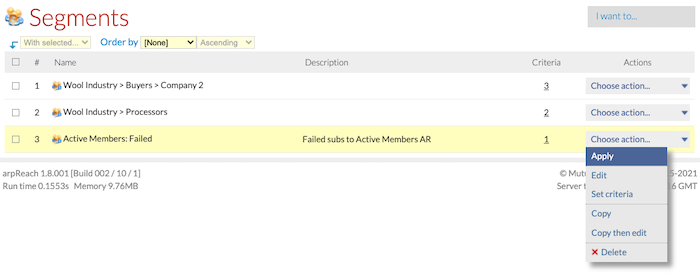
… or choose ‘In segment‘ / Active Members: Failed from the ‘Filter‘ drop-down menu on the Contacts list screen:

TO ADD THEM TO THE SUPPRESSION LIST
5. Once the filter is in place, click on the ‘I want to…‘ drop-down menu and choose ‘Trigger Action for matching contacts‘
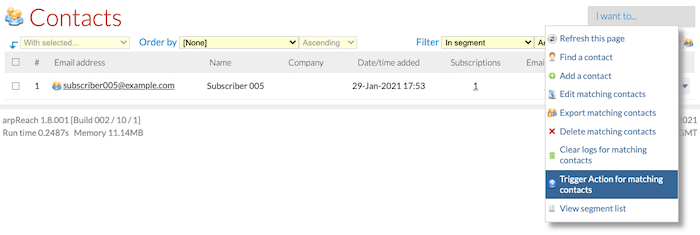
6. On the ‘Trigger Actions For Matching Contacts‘ screen, tick/choose the FailedSubs: Suppression List action you created and click on the ‘Trigger Action‘ button
The action will then be added to the ‘Scheduled Actions‘ list and will be processed during the next (cron) run of the arpReach script.
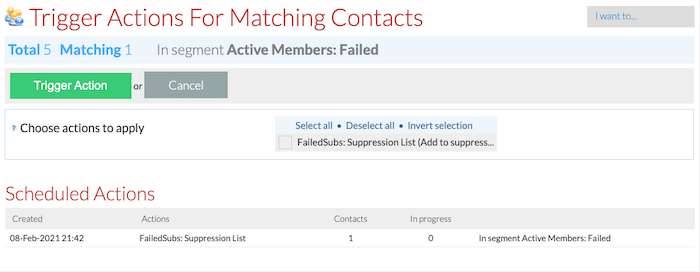
TO MOVE THEM TO THE Failed Subscriptions AUTORESPONDER
7. Go back to the Contacts list screen (the same filter should still be in place) and, this time, choose ‘Edit matching contacts‘ from the ‘I want to…‘ drop-down menu
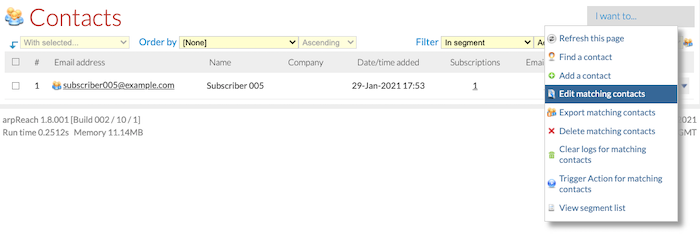
8. On the ‘Edit Matching Contacts‘ screen, select the following under the ‘Subscription‘ section
- For autoresponder: Active Members (the originating autoresponder – where you are removing them from)
- Move to this autoresponder: Failed Subscriptions (the destination autoresponder – where you are transferring them to)
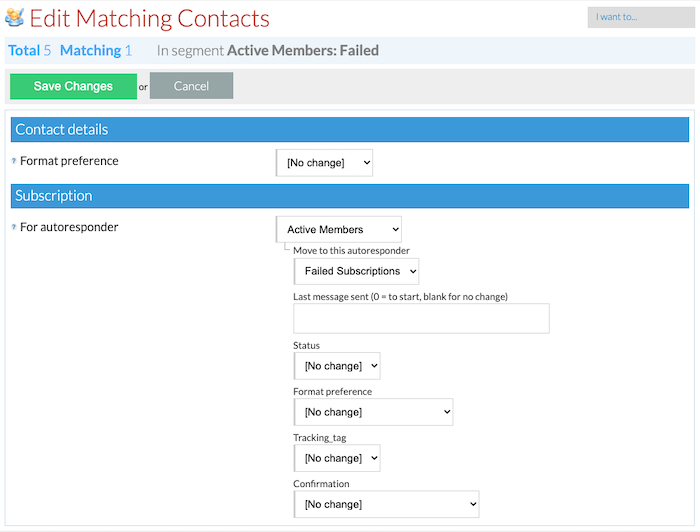
You can leave the rest of the fields as is and click on the ‘Save Changes‘ button.
Once done, the contacts with failed subscriptions to the Active Members autoresponder will already be on the suppression list (assuming that the next cron has already run):

… and moved to the Failed Subscriptions autoresponder:

Tip! Instead of moving the failed subscriptions from the Active Members autoresponder to the Failed Subscriptions autoresponder, you also have the option to just delete their entire contact records from system after adding their email addresses to the suppression list. To do so, just create another action (e.g., FailedSubs: Delete) with the ‘Action‘ type set as ‘Delete contact‘ and also add that new action (FailedSubs: Delete) to the ‘Scheduled Actions‘ list on Step #6. To guarantee that the action to add them to the suppression list is processed prior to the system deleting their contact records, add the actions on the ‘Scheduled Actions‘ list separately. The first being the FailedSubs: Suppression List action, then the FailedSubs: Delete action.

